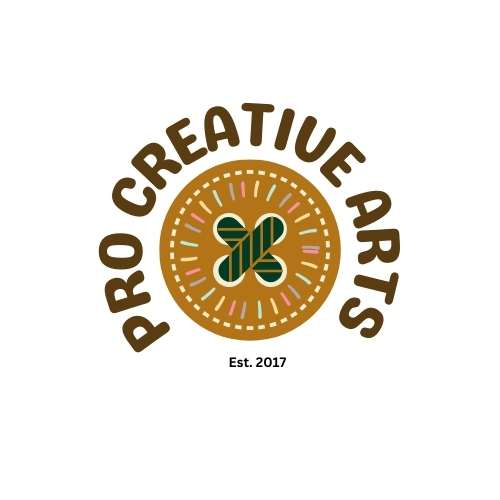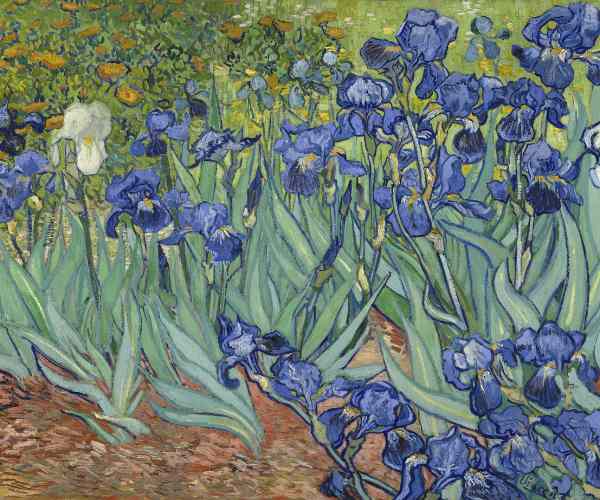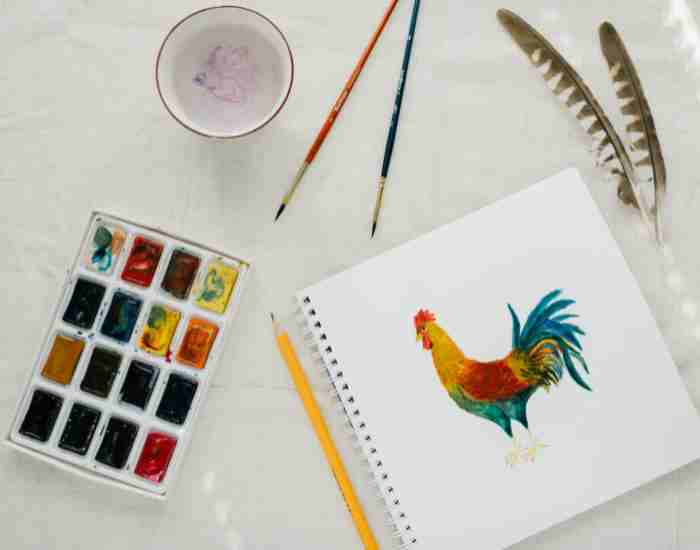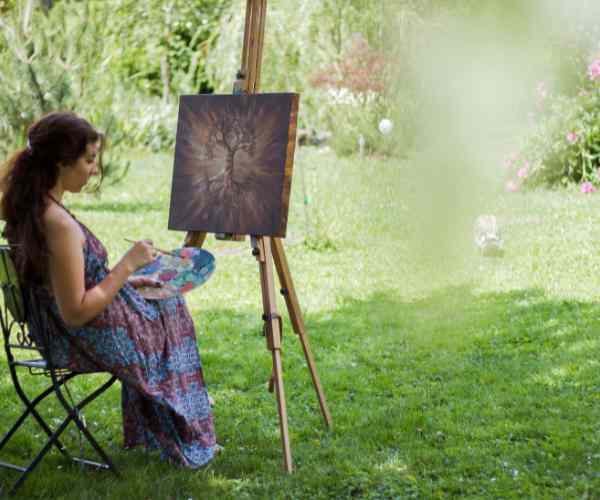Artistic identity is greatly formed with the use of experimentation.
Experimentation acts to be very helpful for many artists as it enables them to try out new forms of expression.
This can be done through new techniques, materials and styles in which different artists can differentiate their work as well.
Pablo Picasso is a prime example of an artist that made experimentation a key part of his work in hopes of breaking traditional boundaries. This approach that Picasso took gave rise to the Movement of Cubism which not only changed the art world forever, but also restructured the identity Picasso had as an artist himself.
The same can be said about Frida Kahlo who used a multitude amount of materials and techniques that were non-conventional to the self portraits that she made with the hopes of incorporating cultural and personal elements into them, and she succeeded to shape the identity she wanted her art to have. These examples demonstrate how wide the scope of dramatic influence can be on an artist’s creative expression through the use of experimentation.
The Importance of Experimentation in Artistic Identity
Experimentation allows artists to step out of the box and step outside of the traditional art boundaries set forth by society.
Pablo Picasso is once again a perfect example of this as his use of Cubism involves moving away from the use of representational art. The use of fragmented abstract forms over the use of representational and perspective draws a change in the form that Picasso’s artist identity took. This new method not only changed his work but also the world of art as well.
A study at the University of Oxford suggests that cultural innovators are most often artists that adopt an experimental style of work. This method pushes them to create works that do not fit into typical genres hence reconfiguring the domains of art.
Discovery and growth
Take Vincent van Gogh for example, with his radical brush strokes and rather bright colors, he is quite the definition of an artist who clothes himself with personal styles and artistic identifiers, this adds, in a way, extension to the domain capturing experimentation. His application of the impasto method with rough color gradient is that he created different artworks and revolutionized post impressionism raising the bar of art that was yet to be reached.
There is an observable trend that defying classification style of creating art results in an increased recognition of the ones creating the art, which is already noticeable according to Google Scholar data. This process of novel recognition stimulates creativity and singularity and culminates in the production of pieces of art that redefined everything and refreshed historical perspective.
Media and Materials
The use of collage and found objects by the likes of Rauschenberg is shown to synergize paint with other industrial or culture embedded materials. Such a shift epitomizes a change from traditional to contemporary ways of art and design. Such approaches towards art not only elevated the expression of art, but also the cultural legacy as well.
As per the research conducted by Institute of Contemporary Art, engagement of artists with multiple materials, contributes to the embracing of innovation, which in turn results in better and positive outcomes in the art world.
Forms and Styles
Art now has a new identity with abstraction becoming a new form of cultural identity. Pollock’s drip painting was revolutionary as it changed the fixed composition of a painting and what can be perceived as the way of creating a piece of art entirely.
The art pieces that implement, on the other hand, various styles and forms tend to attract and cater to a wider audience and multilayered cultures according to the statistical constructions of the Museum of Modern Art.
Practice and Process
Automatic drawing is sometimes associated with the Surrealist movement which was mostly popularized by André Breton and Salvador Dali. It is fascinating how exploring different forms of art helps to shape artist’s identities. This system of creating random and unplanned drawings gives them the ability to unleash their inner self and creatively explore new realms.
Research conducted at the University of Paris also supports the assertion that form centered experimentation can result in major developments within a creative practice, further deepening the bond between the creator and the outcome of their work.
Historical Case Studies
One of the most famous examples is Jackson Pollock. His development of the drip painting method has changed the way art is created and the history of art itself. Pollock’s new procedures for paint application involved pouring and splattering thinned paints onto vertically positioned canvases, thereby producing a seemingly uncontrolled and chaotic image which was challenging conventional ideas about structure and form. It played an essential role in the growth of Abstract Expressionism and proved that an artist’s identity can be changed through experimentation.
A study by the Museum of Modern Art reveals that Pollock’s drip paintings have dramatically shifted the direction of his work as well as left an indelible mark on modern art. This was a dramatic departure from traditional concepts as it incorporated a new methodology of creativity with emphasis on imagination and unplanned manipulation of artistic materials. This change of strategy served to place Pollock on a high pedestal in the annals of art history while at the same time showcasing the possibilities that lie in exploring the unknowns of the creation process.
Current-Day Chaeronean Artists
Medium control is no longer an issue with the contemporary artists, with the aid of the digital era, freedom and explosion of artistic expression is now possible. For example, Rafael Lozano-Hemmer, best known for his interactive installations, merges digital technology with art in a way that makes it responsive to its audience. His work often includes data and algorithmic art and is multiethnic and plays out different contemporary social issues.
According to Google Scholar, artists who work with digital tools are more likely to receive more responses and have a greater impact with their art due to the interactive quality that is inherent in such concepts. Such a concept also opens opportunities to newer paths of creativity as well as tells rich and complex cultural stories that add to the new ways that modern artists are recognized with.
The Difficulties of Entrepreneurship and the Persona of an Artist
There can be simply no doubt about the fact that today, rather than being slow-paced and tedious, art has become a vibrant confluence of ideas and talent. This can be attributed to the burgeoning media sector and increasingly competitive narrative that intermingles with artistic initiatives. The intertwined and fuelling nature of the said industries, according to the University of Arts London, significantly further push the belt boundaries of creativity and imagination.
Participating in creative workshops and teaming up with other artists can also assist in gaining new ideas and direction to work around. There is a blend of artistic inspiration imbibed in the mix which in turn helps in refreshing the way one works or rather the identity they have to themselves as an artist.
The Middle Ground Between Innovation and Culturism
The room for error is quite little when it comes to artists and riot being unleashed is an ultimate end reality to try and pass off. As shown by Yoko Ono, art may still reenact a very different sense yet in its core it can still outline a people’s culture and their narratives, such as the conceptual and performance art she uses. Doing so allows for an individual to blend the two worlds of self and agency and do so in a very seamless manner.
The Cultural Policy Research Institute’s report asserts that an artist’s core experimentation should not be haphazard. Core values and visions should govern any new possibilities one wishes to attain. This helps maintain an artist’s identity intact.
FAQs
What is artistic identity, and how is it formed?
Artistic identity encompasses the attributes and stories that an artist uses to describe his/her work and that which he/she has created.
It is shaped by social, physical, cultural, and any other forms of experiences that an individual has gone through.
Definitions of artistic identity show that it has to do with being part of an individual’s character and ideas. The Journal of Arts and Humanities defines the term to mean ‘optimization of one’s active creative personality and styles.
Artistic identity can be informed by an individual’s personal life, feelings of the individual and his/her origins. All those components combine to provide a particular way of creating art.
How does experimentation impact an artist’s style?
Experimentation can help change and develop new styles in order to improve the overall work of the artist.
To illustrate, Georgia O’Keeffe’s openness to abstraction coupled with the way she employed bold colors created a beautiful impressionist style that made her an instant success in the world of art. Her work shows how throwing one’s self into different artistic forms can help one in creating a style that is unique and very identifiable.
Artists grow and evolve through continuous creative experimentation. This is what the Royal College of Art found after conducting research among several students. The ongoing process allows them to tap on different aesthetic ideas and helps them to create a style that is more complex than before.
Is it possible to lose an artistic identity to revolutionize art?
The answer is yes because experimentation could result in the loss of an artistic identity forever if the artist steps a little away from the core principles and art style he created.
On a similar note, artists struggle with being true to their essence when their experimental tendencies bleed into their signature style. A case in point is Andy Warhol’s transition from pop art to conceptual art, where his fans voiced their discomfort about the authenticity of the latter.
The risk depicted in the image can be mitigated if an artist works with an artist’s narrative and values in mind on the proposed research. A study carried out at the Institute of Contemporary Arts found that artists can maintain their artistic grounding through purposive introduction of new means to their artistic habits.
Closing Thoughts
The Future of Artistic ddENTITY EXPLORING
The artistic identity will continuously evolve and for that reason, experimentation will continue to be predominant.
As artists cross their self-imposed boundaries in the search for new experiences, they expand their repertoire of ways of doing things.
Giving the encouragement’s as the author has been integral to an artistic process may alter the way artists view their roles. In so doing, by venturing into new materials, methods, and angles of look, artists can be able to find newer ways to articulate their individualism and various contemporary societal themes.
More Post



